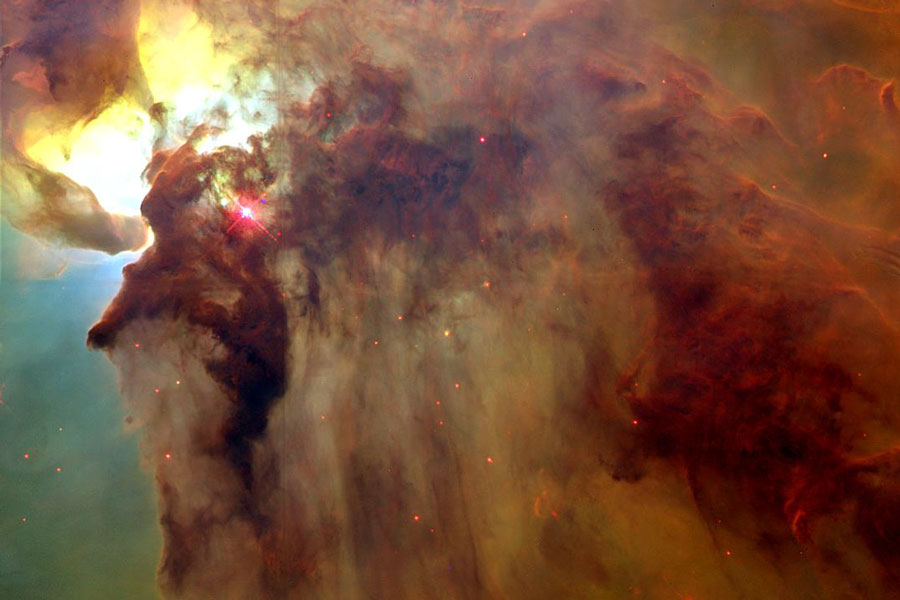
Image description: This 10-micron-wide interplanetary dust, captured at high altitude in the stratosphere, is primarily composed of ice, carbon, and micro silica grains. The collection of these particles is done using dust collectors onboard specially designed space satellites. The dust that wanders in the solar system mainly comes from comets and asteroids and dates back to the early formation of the Sun. Under certain conditions, a glow produced by the reflection of sunlight on the particles of the zodiacal dust disk can be seen; this glow is called Zodiacal Light. This dust disk, pushed by solar radiation, extends between Mercury and Mars. Credit: NASA.
The diffuse interstellar medium is composed of matter that fills the space between stars. The ordinary matter of this medium is primarily composed of ionized hydrogen (H+), atomic hydrogen (H1), molecular hydrogen (H2), and dust.
Dust represents less than 1% of the total mass of the interstellar medium, which itself represents only 10% of the luminous mass (ordinary matter) of the galaxy. Dust is not a primordial component but the result of stellar explosions that spread the recycled atmospheres of stars into the interstellar medium. Dying stars produce matter in the form of dust, which serves as the basic material for the formation of new stars.
Interstellar dust or cosmic dust resembles an assembly of grains with a maximum diameter of 0.1 microns (image above). Interstellar dust grains are actually simple assemblies of molecules that become increasingly complex until they reach dimensions of 0.1 µ (about 10,000 molecules). Interplanetary dust grains are larger and can reach sizes of several tens of microns (about 1 million molecules). They are captured at high altitude in the Earth's stratosphere using collectors. Dust also exists in the intergalactic medium and, of course, in even smaller quantities. Intergalactic dust grains are much smaller, the size of a few molecules.
Interstellar dust grains recycled in the hearts of stars spread again into interstellar space when the star at the end of its life expels its layers of matter. This matter, as it cools, finds favorable conditions to assemble into clusters of molecules. But the dust recycled by the stellar machine, the kind we see in the universe or in our solar system, is not the same as the dust we know in our homes. Household dust is primarily produced by the erosion of objects. In this dust, all chemical elements known on Earth can be present.
N.B.: Molecular hydrogen (H2) is made of two hydrogen atoms chemically bonded. Molecular clouds are interstellar nebulae whose density allows the formation of H2. The H2 molecule is not easily detectable, but scientists have a tracer that indicates the presence of molecular hydrogen; this tracer is carbon monoxide (CO). Indeed, the ratio between the luminosity of CO and the mass of H2 is almost constant.

Seeing all this dust, it is hard to believe that there are only a few dozen atoms per cubic centimeter, but space is immense. The size of the Lagoon Nebula is about 110 light-years, which represents a lot of atoms.
The walls of dust are faintly illuminated by the stars behind them because these small solid grains absorb light perfectly. However, telescopes can pierce these cosmic wonders through long exposures that reveal the entire palette of colors, particularly the astonishing pink color of hydrogen.
William Herschel (1738-1822) discovered dark nebulae, clouds of gas and dust without light.
1997 © Astronoo.com − Astronomy, Astrophysics, Evolution and Ecology.
"The data available on this site may be used provided that the source is duly acknowledged."
How Google uses data
Legal mentions
English Sitemap − Full Sitemap
Contact the author